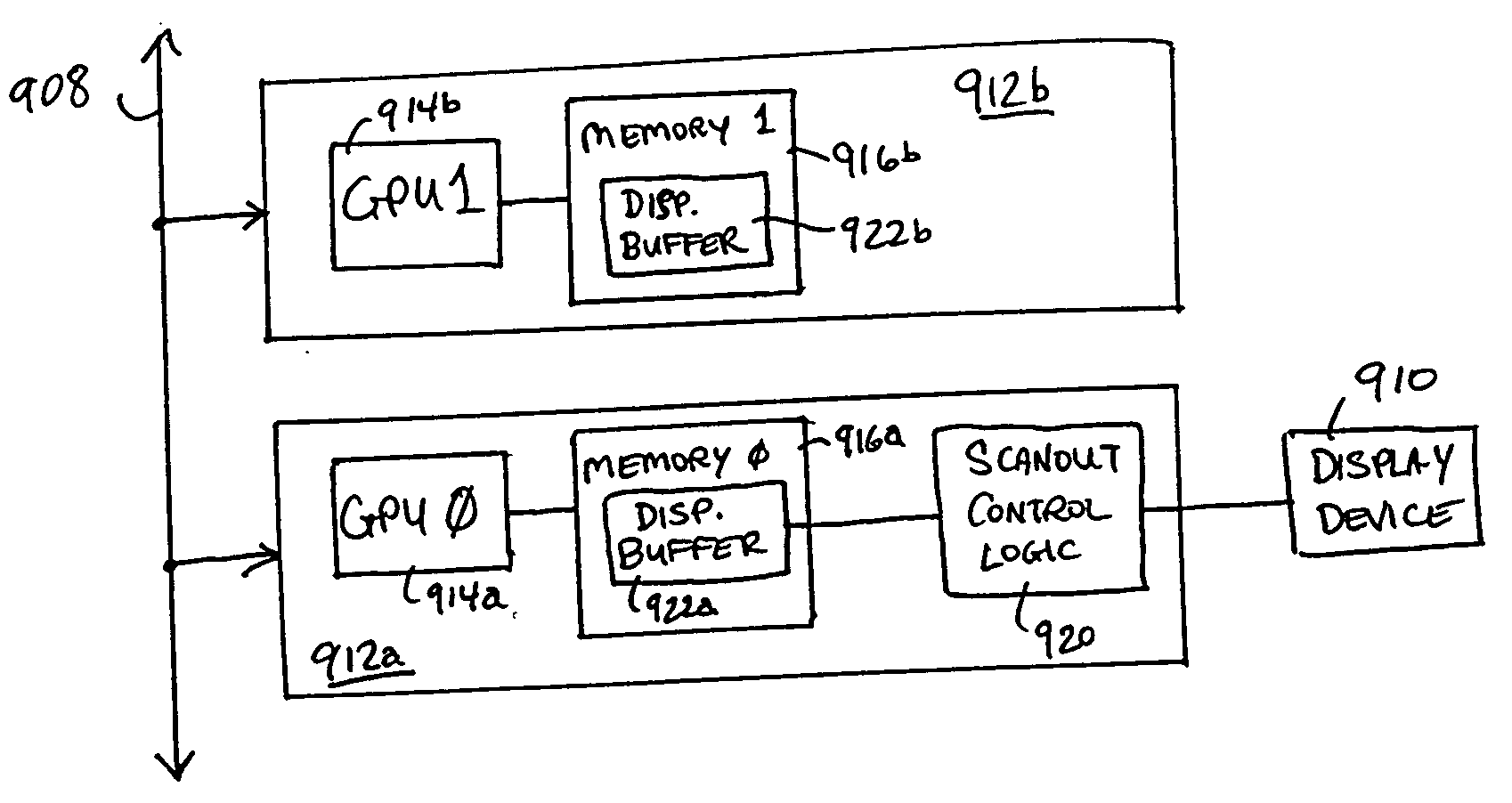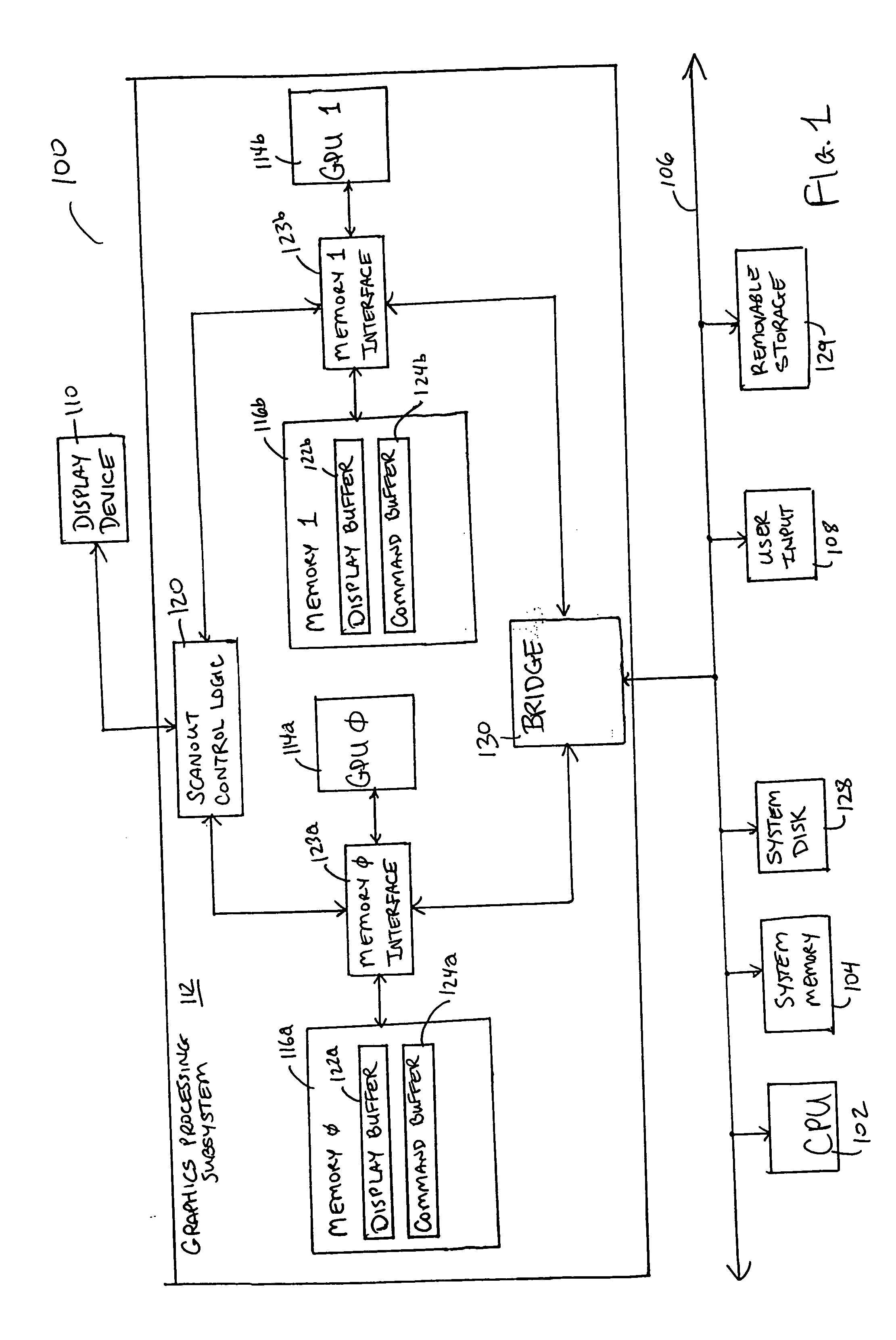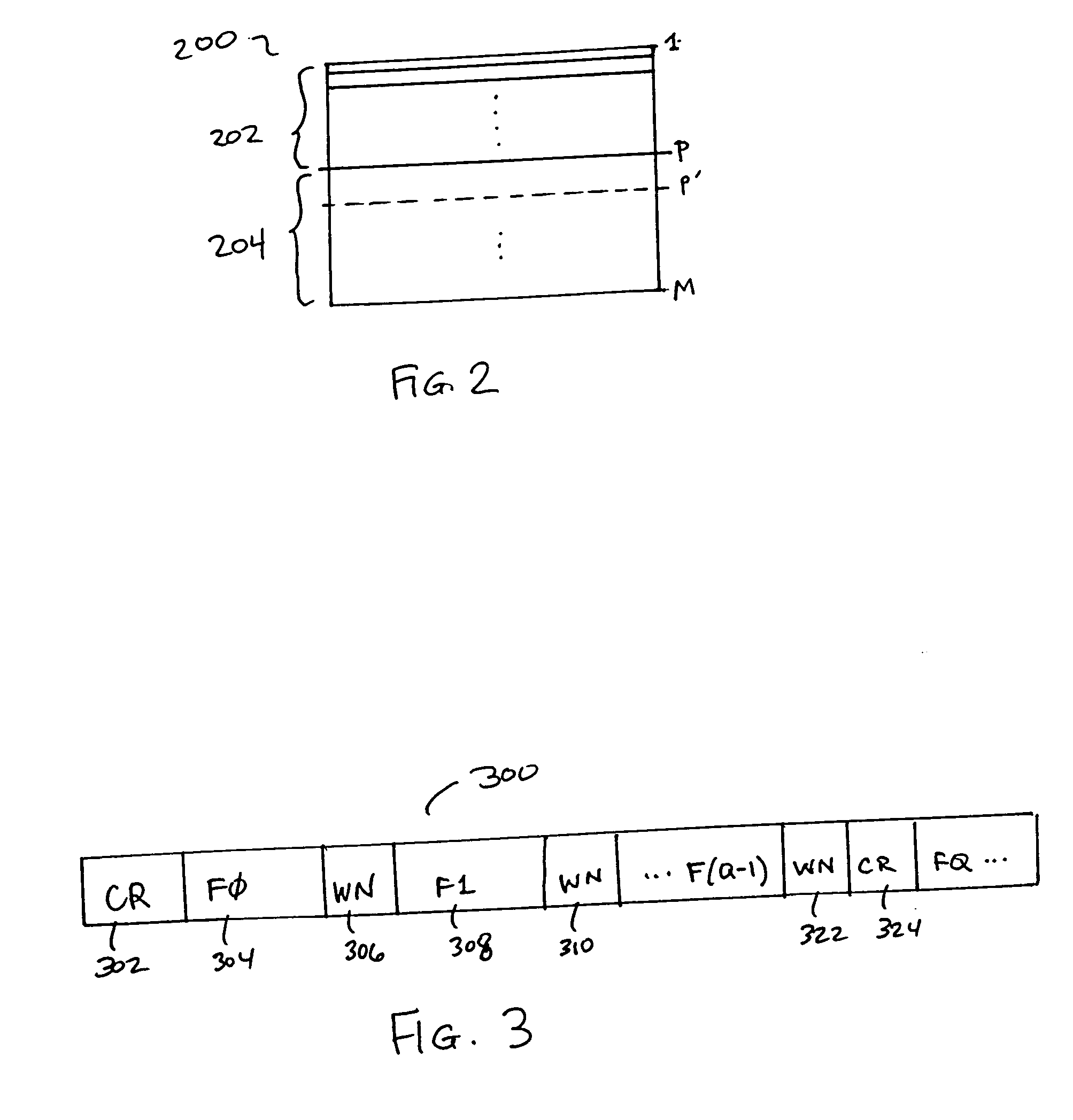Adaptive load balancing in a multi-processor graphics processing system
a graphics processing system and multi-processor technology, applied in the field of graphics processing subsystems, can solve the problems of wasting valuable computational resources, and simply partitioning the display area equally among the gpus is not an optimal solution
- Summary
- Abstract
- Description
- Claims
- Application Information
AI Technical Summary
Benefits of technology
Problems solved by technology
Method used
Image
Examples
Embodiment Construction
[0027] The present invention provides systems and methods for balancing a load among multiple graphics processors that render different portions of a frame. In some embodiments, load balancing is performed by determining whether one of two graphics processors finishes rendering a frame last more often than the other. If one of the processors finishes last more often, a portion of the processing burden (e.g., a number of lines of pixels to render) is shifted from that processor to the other processor. The comparison can be repeated and the load adjusted as often as desired. The technique of pairwise load comparisons and balancing can be extended to systems with any number of graphics processors.
[0028]FIG. 1 is a block diagram of a computer system 100 according to an embodiment of the present invention. Computer system 100 includes a central processing unit (CPU) 102 and a system memory 104 communicating via a bus 106. User input is received from one or more user input devices 108 (e...
PUM
 Login to View More
Login to View More Abstract
Description
Claims
Application Information
 Login to View More
Login to View More - R&D
- Intellectual Property
- Life Sciences
- Materials
- Tech Scout
- Unparalleled Data Quality
- Higher Quality Content
- 60% Fewer Hallucinations
Browse by: Latest US Patents, China's latest patents, Technical Efficacy Thesaurus, Application Domain, Technology Topic, Popular Technical Reports.
© 2025 PatSnap. All rights reserved.Legal|Privacy policy|Modern Slavery Act Transparency Statement|Sitemap|About US| Contact US: help@patsnap.com



